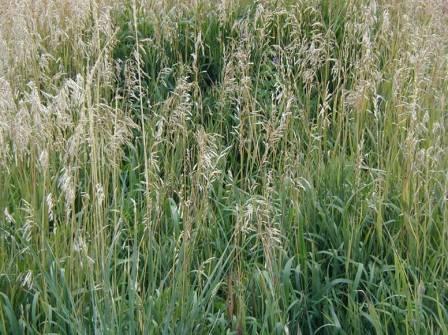Forage Identification: Smooth bromegrass
Department of Plant Sciences
Smooth bromegrass (Bromus inermis Leyss.)
|
Adaptation:
|
 |
|
Growth Habitat: |
 |
|
Plant Characteristics: |
 |
|
Seed Characteristics: |
 |
|
Important Identifying Characteristics: |
 |
|
Primary Uses: |
